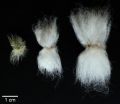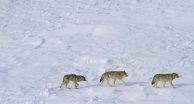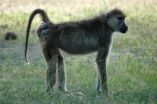(Press-News.org) A University of Texas at Austin scientist, working with an international research team, has developed the most precise sequence map yet of U.S. cotton and will soon create an even more detailed map for navigating the complex cotton genome. The finding may help lead to an inexpensive version of American cotton that rivals the quality of luxurious Egyptian cotton and helps develop crops that use less water and fewer pesticides for a cotton that is easier on the skin and easier on the land.
Z. Jeffrey Chen and his collaborators, Tianzhen Zhang and Wangzhen Guo at Nanjing Agricultural University (NAU) in China, describe the new draft genomic sequence in a paper published today in Nature Biotechnology. Chen and another group of scientists also learned earlier this month that they will receive $2.3 million in funding from the National Science Foundation to take the draft road map to completion.
Having a detailed genetic road map of an American crop that has recently fallen on tough times could prove critical to the industry. Cotton is known as the most important renewable fiber crop, and its seeds and oils are used in food for humans and livestock, as well as in fertilizer.
The species of cotton Chen's team is sequencing is Upland (or American) cotton (Gossypium hirsutum), which makes up 95 percent of all cotton grown. A well-defined map of the Upland cotton's genome would allow researchers and growers to better understand the interactions between genes that determine the species' ability to produce better fibers and oils in seeds.
"Only about 20-30 percent of the cells on the cotton seed surface actually produce fibers, and no one knows why," said Chen, the D.J. Sibley Centennial Professor in Plant Molecular Genetics. "Knowing more about the sequence map could allow for more and better cotton to be produced on every seed or plant."
The U.S. is a leading exporter of cotton, and Texas grows more cotton than any state, producing nearly 30 percent of the nation's supply. The crop generates an estimated $2 billion per year for the state's economy, but droughts and other weather-related changes since 2010 have led to steep losses for Texas cotton farmers, with yields down in some areas by as much as 50 percent.
Within this context, scientists have made several efforts to sequence the cotton genomes. The task is complicated for Upland cotton, a plant formed by two ancestral species 1.5 million years ago and that carries twice as many copies of genes as the presumed parent plants. Sequencing parent species, as previous researchers have done, is relatively easier but offers only a rough approximation of American cotton, much the way that using a map from the 1800s would provide incomplete information for someone trying to navigate a modern city.
"This sequence will accelerate genetic and breeding improvement of cotton production," said Zhang, director of the Cotton Research Institute at NAU.
David Stelly of Texas A&M, a collaborator with Chen on both the paper and the new grant, noted that the draft cotton genome sequence will be a "game-changer," launching a new era in cotton research, education and breeding.
Although the new map is accurate, with the new grant, Chen and researchers from Texas A&M University, Clemson University, Alcorn State University and HudsonAlpha Institute for Biotechnology will create a higher resolution or "gold standard" map of the Upland cotton genome. Their novel sequencing method will be able to account for changes that occurred in Upland cotton over more than a million years and could also be applied to other important crops.
"Most crop species are also polyploid," said Chen, referring to plants whose DNA contains more than two of each chromosome. "Wheat, oats, canola, coffee, bananas, strawberries, sugarcane and basically everything that we eat, that we drink, and that we live on is polyploid."
INFORMATION:
The research from Chen and colleagues in China published today was written with contributors in China, Australia and the United States from Novogene Bioinformatics Institute, Clemson University, the U.S. Department of Agriculture, Texas A&M University, the Shanghai Institutes for Biological Sciences, the Commonwealth Scientific and Industrial Research Organization, Mississippi State University and Cotton Incorporated.
U.S. funding for the project came from the National Science Foundation and Cotton Incorporated.
Using the latest genome sequencing techniques, a research team led by scientists from UC San Francisco (UCSF), Baylor College of Medicine, and Texas Children's Hospital has identified a new autoimmune syndrome characterized by a combination of severe lung disease and arthritis that currently has no therapy.
The hereditary disorder, which appears in early childhood, had never been diagnosed as a single syndrome. The new research revealed that it is caused by mutations in a single gene that disrupt how proteins are shuttled around within cells. Patients with the newly ...
We often make quick strategic decisions to attack an opponent or defend our position, yet how we make them is not well understood. Now, researchers at the RIKEN Brain Science Institute in Japan have pinpointed specific brain regions related to this process by examining neural activity in people playing shogi, a Japanese form of chess. Published in Nature Neuroscience, the study shows that two different regions within the cingulate cortex--one toward the front of the brain and the other toward the back--separately encode the values of defensive and offensive strategies.
Like ...
Large amounts of methane - whether as free gas or as solid gas hydrates - can be found in the sea floor along the ocean shores. When the hydrates dissolve or when the gas finds pathways in the sea floor to ascend, the methane can be released into the water and rise to the surface. Once emitted into the atmosphere, it acts as a very potent greenhouse gas twenty times stronger than carbon dioxide. Fortunately, marine bacteria exist that consume part of the methane before it reaches the water surface. Geomicrobiologists and oceanographers from Switzerland, Germany, Great Britain ...
New apps developed for children come online every day and many of them are marketed or labeled as "educational" - but how can we tell which of these thousands of apps will actually help children learn? A comprehensive new report published in Psychological Science in the Public Interest, a journal of the Association for Psychological Science, integrates research from scientific disciplines like psychological science, linguistics, and neuroscience to provide an evidence-based guide that parents, educators, and app designers alike can use to evaluate the quality of so-called ...
HANOVER, N.H. - Although the media often portray the Arctic as a new "Great Game" ripe for conflict, a group of international Arctic experts co-chaired by Dartmouth College released recommendations today aimed at preserving the polar north as an area for political and military cooperation, sustainable development and scientific research.
The report, which addresses the priorities of the Arctic Council, an intergovernmental forum of the eight nations that border the polar region, resulted from meetings at the Carnegie Endowment for International Peace in Washington, ...
Only three wolves seem to remain in Isle Royale National Park. Researchers from Michigan Technological University observed the wolves during their annual Winter Study, and the lone group, at an unprecedented low, is a sharp decline from nine wolves observed last winter.
The study's report, released today, marks the project's 57th year of observing wolves and moose in Isle Royale. It is the longest running predator-prey study in the world. This year, along with the three resident wolves, scientists estimated 1,250 moose on the island and observed two visiting wolves, ...
Massachusetts General Hospital (MGH) investigators have found the probable mechanism underlying a previously described biomarker associated with the risk of developing serious diseases ranging from cancer to cardiovascular disease and the risk of serious complications. In a paper published in the American Journal of Hematology, the research team reports finding that higher levels of a measure routinely taken as part of the complete blood count - the extent of variation in the size of red blood cells - is caused by reduced clearance of aging cells from the bloodstream. Hundreds ...
When you take a medication for, say, high cholesterol, do you know that pill is really what the label says it is? Depending upon the type of medicine and where you live, the threat of falsified medications (also referred to as counterfeit, fraudulent, and substandard) can be quite real, yet the full scope and prevalence of the problem is poorly understood, say researchers at University of California, San Diego School of Medicine in a new report published April 20 in the American Journal of Tropical Medicine and Hygiene.
Counterfeit medicines have traditionally been defined ...
DURHAM, N.C. -- While the female baboon's big red bottom may be an eyesore to some, it has an aphrodisiac effect on her mates. Biologists have long thought that baboon males prefer females with bigger backsides as the mark of a good mother, but new research suggests it isn't so simple.
A study of wild baboons in southern Kenya reveals that the size of a female's swollen rump doesn't matter as much as previously thought.
The study appears online in the journal Animal Behaviour.
Baboons breed throughout the year, and mating occurs during times when a female's behind ...
ALEXANDRIA, VA, APRIL 20, 2015 - Higher-than-expected rates of pediatric cancers have been identified in the Miami metro area and an area west of the Everglades in a series of five statistical analyses conducted for Science and Public Policy, an open-access, online public-policy journal published by the American Statistical Association (ASA).
In a review of the analyses for Science and Public Policy, Lance A. Waller, a biostatistics professor specializing in spatial epidemiology at Emory University in Atlanta, urges care in next steps, recommending that state and local ...



